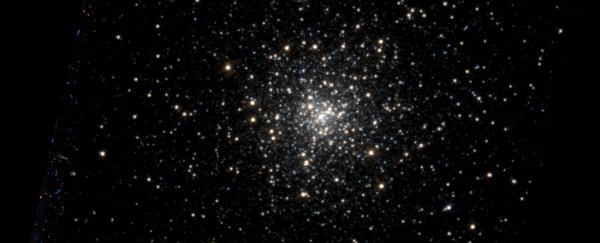The Milky Way galaxy has a history of violence.
Over the Universe's 13.8-billion-year lifespan, it has repeatedly collided with and subsumed multiple other galaxies – and it's not done. It's in the process of merging with smaller satellite galaxies even as you read these words: the Sagittarius Dwarf Spheroidal Galaxy, and the Large and Small Magellanic Clouds.
But these satellite galaxies aren't innocents in the matter, oh no. A team of astronomers led by Alessio Mucciarelli of the University of Bologna in Italy has found evidence that the Large Magellanic Cloud (LMC) is also a cannibal, having merged with another galaxy at some point in its mysterious past.
The finding, the researchers say, represents fascinating support for the way we think massive galaxies grow: by swallowing smaller satellite galaxies, a process we call hierarchical assembly.
"This discovery," they write in their paper, "is observational evidence that the process of hierarchical assembly has worked also in shaping our closest satellites."
The Magellanic Clouds are locked in a complex dance with the Milky Way. The two satellite galaxies orbit each other, and then together they orbit the larger Milky Way. The LMC is about twice the size of the Small Magellanic Cloud, and has a total mass up to 250 billion solar masses – a size at which a dwarf galaxy is expected to have satellites of its own.
And, in fact, it does. Four to six small, ultra-faint galaxies have been associated with the LMC, which could mean that it once had even more hangers-on. There's evidence for this, too.
In 2018, astronomers found a small number of stars in the LMC orbit against the grain, counter-clockwise around the galactic center, against the majority of the stellar flow. This, they concluded, was likely the remnant of an ancient galactic merger.
Now Mucciarelli and his colleagues have found another piece of evidence: a globular cluster named NGC 2005.
Globular clusters comprise hundreds of thousands to millions of stars, tightly bound together by gravity into a spherical shape, with a dense concentration of stars in the center. The stars in a globular cluster tend to be on the older side, and the same age and chemical composition. They're thought to be 'fossils' of the early Universe, which makes them useful for understanding the history of star formation.
The Milky Way has around 150 such clusters, and the Large Magellanic Cloud has around 60. Mucciarelli and his colleagues identified and compared NGC 2005 to other such clusters, and found that its chemical abundance ratios were wildly different from any other cluster with similar metallicities in the study.
Stellar metallicity is an indicator of age – the earlier in the Universe that a star was born, the lower the metallicity. This is because elements heavier than helium didn't really exist in the Universe before stars.
Once stars were born, they started fusing nuclei in their cores to create heavier elements; heavier elements still are forged in violent supernova explosions and stellar mergers, before being scattered throughout the Universe to be incorporated into future generations of stars.
Stars with similar metallicities are thought to be the same age, and the abundance ratios tell us about the molecular cloud the star was born in. Other clusters with similar metallicities in the LMC all have similar abundance rations, suggesting that they were born in environments with a similar chemical enrichment history, probably the LMC itself.
But the abundance ratios in NGC 2005 are significantly lower than any of the other clusters, which suggests a different history. So the team ran simulations to see how such a wildly different cluster could have turned up in the LMC.
The best fit was a different galaxy entirely, very similar to the existing ultra-faint satellites. The bulk of that mysterious ghost galaxy would have since dissolved, leaving NGC 2005 as the last evidence that it ever existed.
"NGC 2005 is the surviving witness of the ancient merger event that led to the dissolution of its parent galaxy into the Large Magellanic Cloud, the only known case so far to be identified by its chemical fingerprints in the realm of dwarf galaxies," the researchers write.
"Our findings thus support the predictions on the self-similar nature of the process of galaxy formation by the standard cosmology on our closest satellite, and open a new way to investigate the assembly history of galaxies beyond the Milky Way via the chemical tagging of their globular cluster systems."
The research has been published in Nature Astronomy.
